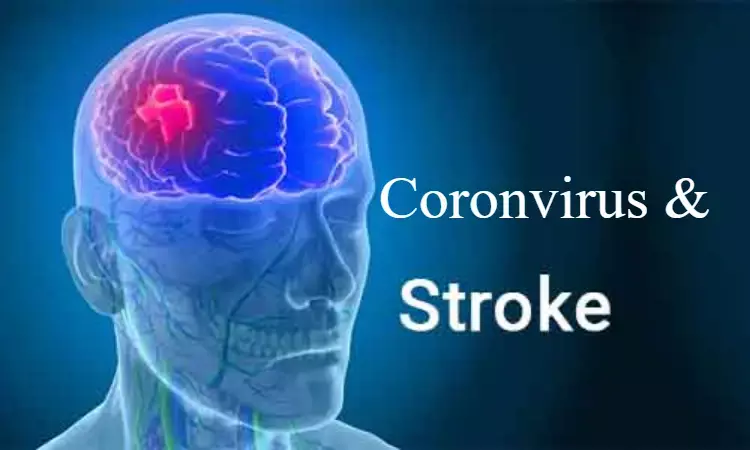- Home
- Medical news & Guidelines
- Anesthesiology
- Cardiology and CTVS
- Critical Care
- Dentistry
- Dermatology
- Diabetes and Endocrinology
- ENT
- Gastroenterology
- Medicine
- Nephrology
- Neurology
- Obstretics-Gynaecology
- Oncology
- Ophthalmology
- Orthopaedics
- Pediatrics-Neonatology
- Psychiatry
- Pulmonology
- Radiology
- Surgery
- Urology
- Laboratory Medicine
- Diet
- Nursing
- Paramedical
- Physiotherapy
- Health news
- Fact Check
- Bone Health Fact Check
- Brain Health Fact Check
- Cancer Related Fact Check
- Child Care Fact Check
- Dental and oral health fact check
- Diabetes and metabolic health fact check
- Diet and Nutrition Fact Check
- Eye and ENT Care Fact Check
- Fitness fact check
- Gut health fact check
- Heart health fact check
- Kidney health fact check
- Medical education fact check
- Men's health fact check
- Respiratory fact check
- Skin and hair care fact check
- Vaccine and Immunization fact check
- Women's health fact check
- AYUSH
- State News
- Andaman and Nicobar Islands
- Andhra Pradesh
- Arunachal Pradesh
- Assam
- Bihar
- Chandigarh
- Chattisgarh
- Dadra and Nagar Haveli
- Daman and Diu
- Delhi
- Goa
- Gujarat
- Haryana
- Himachal Pradesh
- Jammu & Kashmir
- Jharkhand
- Karnataka
- Kerala
- Ladakh
- Lakshadweep
- Madhya Pradesh
- Maharashtra
- Manipur
- Meghalaya
- Mizoram
- Nagaland
- Odisha
- Puducherry
- Punjab
- Rajasthan
- Sikkim
- Tamil Nadu
- Telangana
- Tripura
- Uttar Pradesh
- Uttrakhand
- West Bengal
- Medical Education
- Industry
SVIN Guidance for treating stroke patients during COVID-19 pandemic

New guidelines shall provide Careful balance of protecting health care workers while treating emergency stroke patients
(Boston)--Society of Vascular & Interventional Neurology (SVIN) and Boston University School of Medicine (BUSM) researcher have developed a new guidance for treating stroke patients during COVID-19 pandemic.
This guidance statement appears online in the journal Stroke.
In an effort to mitigate the spread of COVID-19 and to optimize allocation of healthcare resources, researchers are improving ways to treat patients with acute large vessel occlusion strokes in a safe manner that also better protects health care workers.
The new guidance statement is divided into four phases: pre-hospital to the emergency department, pre-thrombectomy procedure, thrombectomy intra-procedure and post-reperfusion therapy.
"Every opportunity and detail to recalibrate our acute neurological workflow to protect our frontline health care workers, our families, our colleagues and our patients should be sought, implemented and adapted to a resource-constrained environment," explained corresponding author Thanh Nguyen, MD, professor of neurology, neurosurgery and radiology at BUSM and director of the neuroendovascular service at Boston Medical Center.
Among the recommendations:
1.Screen every acute stroke patient for COVID-19 adhering to local EMS, emergency department (ED) protocols.
2.Use of remote tele-stroke technology to obtain history and perform neurological examination, post reperfusion monitoring, if available.
3.Minimize the number of people at an acute stroke or thrombectomy code: one person in protective equipment with patient, another at computer/phone to help coordinate care.
4.Consider low-dose chest computerized tomography (CT) as the same time as head CT/CTA to facilitate COVID-19 diagnosis.
Implement a "direct to the angiography suite" approach for stable transferred patients with stroke symptoms onset within 24 hours to minimize exposure to ED and CT personnel.
Consider conscious sedation as first-line to protect anesthesiologists from exposure, and to protect patients from unnecessary intubation as well as conserving mechanical ventilator resources.
If patients exhibit pulmonary symptoms, lower threshold to intubate patients in a controlled manner in a negative pressure room.
Defer any tests that won't change management until the patient has ruled out for COVID-19.
Consider repatriation of select patients back to primary stroke centers to recover after thrombectomy for hospitals overwhelmed with critical care or intensive care unit bed shortages. This can help maintain thrombectomy access.
According to the researchers, these new workflow applications are based on shared best practices, consensus among academic and non-academic practicing vascular and interventional neurologists and literature review, and could be adapted to the available resources of a local institution.
"The acute stroke patient is a vulnerable group to address because these patients often come emergently from the community with little information. Radical changes are necessary to optimize the safety of the providing team and our patients, limit unnecessary tests, conserve personal protective equipment (PPE) resources and mechanical ventilator usage," added David Liebeskind, MD, director of the UCLA Comprehensive Stroke Center and SVIN president.
Nguyen believes it is incumbent upon all of us to protect each other so that we are not unknowingly exposed or spread to our most vulnerable patients, while at the same time, providing optimal care, patient safety, and access to treatment for stroke patients. This guidance statement pertains to current practice and can change as new evidence arises.
For further reference log on to:
https://www.ahajournals.org/doi/abs/10.1161/STROKEAHA.120.030100
Dr Kamal Kant Kohli-MBBS, DTCD- a chest specialist with more than 30 years of practice and a flair for writing clinical articles, Dr Kamal Kant Kohli joined Medical Dialogues as a Chief Editor of Medical News. Besides writing articles, as an editor, he proofreads and verifies all the medical content published on Medical Dialogues including those coming from journals, studies,medical conferences,guidelines etc. Email: drkohli@medicaldialogues.in. Contact no. 011-43720751


